Reasons to Love Mono Red
- PDH Home Base

- Jan 18, 2021
- 9 min read

A few months ago, I did two small polls. The first was about what colors people preferred when building multicolor PDH decks, and the second asked which color was preferred when building monocolored decks. Surprisingly, red scored even worse than white in both polls. This article aims to give mono red some love, showing the strengths, themes, and potential commanders the color can employ. We won't directly be talking about the role red plays in multicolor decks, but hopefully the themes we discuss can also serve as deck building inspiration for any red deck.
Additionally, many people compare red and white because of their aggressive and go-wide capabilities, so this article will also discuss some of the differences between the two colors when discussing those themes. If you want to read more about white, you can read a Reasons to Love Mono White article here.
Commanders
Tokens
One of red’s strengths is token production. Some token factories, such as Loyal Apprentice and Young Pyromancer, can head up powerful aggro decks, while others, like Mad Ratter and Raptor Hatchling, can be used to create midrange decks, spewing a continuous torrent of tokens well into the late game. This theme is shared with white, but some of red's repeatable token generators are able to produce more tokens per turn cycle in the late game than white's. This is because red uses more triggered abilities, while white tends towards activated abilities.
Team Buffs
Another shared theme with white is effects that can buff a whole team of creatures. The difference is that red buffs toughness far less, instead offering more options that can give larger offensive boosts.
Equipment Synergy
Similar to white’s aura focus, red has many commanders with powerful equipment synergies. We’ve already discussed two (Raptor Hatchling tokens and Rabble Rouser team buffs), but there are a slew of other examples that can turn a pile of equipment into a one-shot-kill with commander damage, a raging horde of elementals, or some very dangerous repeatable removal.
Spell Slinging
Here’s where the similarities with white stop. Red loves its non-creature spells and has several commanders that can either turn your spells into additional damage or give you the card advantage needed to string together tons of spells in a single turn. The latter are some of the best storm commanders in all of PDH.
Rummaging and Wheeling
One of the reasons I was confused by red’s lack of popularity in the polls is that many people cite white and red’s lack of card advantage as a reason that they don’t like playing it. However, red has far more access than white to both cards selection and advantage in the form of discarding and drawing cards. Red has plenty of ways to negate the card disadvantage of discarding, such as cards with flashback, madness, and escape, as well as a few other ways to play spells from the grave like jump-start and retrace.
Red has a slew of cards, both in the command zone and the rest of the deck, which allow you to draw and discard cards. Some of them even force your opponents to discard and draw, potentially forcing them to discard needed combo pieces or interaction. These can be some of the most flexible midrange decks available to mono red because of their large amount of card selection.
Repeatable Removal
Another advantage red has is a large number of sources of repeatable removal. These can also act as a form of card advantage, knocking out multiple creatures over time and making combat calculations a huge pain for defending players. These are some of the best red commanders for building control decks.
Haste
Red has a unique leg up on other colors when it comes to winning with commander damage. Red can’t do as much to defend its commanders, but it has several large ones that can attack as soon as they are recast, so removal doesn’t always cause you to lose a turn.
Goblins
As a final note on commanders, it would be impossible to talk about mono red without talking about the ridiculousness of goblins. While goblin aggro isn’t as usable in PDH as in other formats, goblin tribal is still well and truly viable. These decks all use goblins as a source of removal or as a way to make a giant commander damage threat… and of course there’s coin flipping involved. If you want to read a more in depth discussion of goblins in PDH, you can start with this article.
Commons
Now that we’ve finished taking a look at a variety of red commanders, let’s take a dive into the 99 and look at the framework of themes that our commanders can fit into. We have a previous article touching on red strengths and staples, but that was intended as a simple introduction for those new to the format. Here, we’re looking to go more in depth and show more examples of several different card categories.
Tokens
Similar to white, red has many ways to create a wide board of tokens. However, red lacks repeatable sources, instead focusing on mana-efficient ways to quickly produce tokens.
Team Buffs
Again, like white, red pairs its token production with ways to strengthen a whole team of creatures at once. As was the case with white, commanders specializing in token production will often have more team buffs in the main deck, while commanders with a built-in way to strengthen your creatures will usually have more token production in the main deck.
In red, though, the team buffs can give much larger power boosts at the cost of never boosting toughness. This is better for large alpha-strikes, but worse for sustained wars of attrition. This tends to push red go-wide decks towards extremes. They either want to hit early, before other decks have profitable blocks, or they want to wait until the late game, when life totals have been whittled down and they can kill multiple opponents at once.
It's also good to note that red can apply much larger power boosts than white. The best white can do is +2/+2 from a single spell, but several activated abilities and spells in red can give +3/+0 or more from a single source.
Block Prevention
Red may not be able to buff toughness on a whole team, but that doesn’t mean it just allows opponents to block how they want. Red has a variety of effects that stop blocking to help keep its glass cannon attackers alive while dealing maximum damage.
Theft
What's better than just stopping your opponents from blocking? Stealing their creatures and making them attack their owners sounds good. Theft spells are more circumstantial, but when used against players with large creatures, they can be devastating. If you can sacrifice the creature before giving it back, the theft spell can even double as removal.
Spell Slinging
One of red's best sources of repeated value outside the command zone takes the form of triggering abilities with non-creature spells. This theme is also present in blue, and sometimes white, but red has the most consistently aggressive take on this theme. Red versions of this effect typically deal damage, boost power, or place +1/+1 counters.
Cantrips
Red has a good number of useful cantrips which can help squeeze more value out of decks that generally lack powerful card advantage. Recent sets have been steadily giving red more of these at common, so I expect the number of them available in PDH to continue to steadily rise. That's incredibly helpful for a wide variety of decks, especially those that have abilities triggered by casting non-creature spells, since you get multiple effects without decreasing your hand size.
Rummaging
Red may not have much draw, but what it has in spades is card selection. Effects that both discard and draw cards are the most common form of these. Just like commanders with this type of effect, looting and rummaging cards in the main deck can be turned into card advantage when used with mechanics like flashback, madness, escape, and encore.
Efficient Removal
Now we are really getting into some signature mono red territory, so it's time to deal some damage. The next few sections are all devoted to the many assorted ways red can deal damage.
First, let's talk about the efficient and flexible removal that has alternate modes, cost reductions, or the ability to hit multiple targets. These tend to be closer to the burn spells you see most in 1v1 formats, where mana efficiency and flexibility are vital. The higher cost cards in this category tend to belong to more mid-range or control-focused PDH decks, which can afford to pay a little more to get extra value from every card played. Below are a few newer cards that fall into that category, which weren't listed in our previous overview of burn spells.
Repeatable Removal
The next category of red damage dealers take the form of repeatable activated abilities that can deal damage to any target. These are mostly seen in control decks, but they are also sometimes used to repeatedly trigger abilities on commanders, such as Chandra's Spitfire and Raptor Hatchling. They can also make great hate cards against decks that run a lot of small creatures or help deal damage around annoying blockers.
Damage to Everything
Another way red can deal damage is by carpet bombing the battlefield. Red specializes in spells and abilities that hit all creatures, all opponents' creatures, or all creatures and players. These tend to be seen the most in midrange and control decks, although faster decks will occasionally run the spells that only hit opponents' creatures to help clear the way for big attacks.
Incremental Damage to Opponents
With 30 life and 3 opponents in PDH, you don't often see a Lightning Bolt aimed at a player's face. However, red PDH decks can still burn opponents out by using triggered abilities that can deal lots of damage over time. These can see play in a huge variety of decks, helping aggro squeeze more value out of tokens, allowing midrange a sudden burst of damage, or giving control decks a way to steadily chip away at their opponents.
Big Damage
Not all red burn in PDH has to be incremental, though. Go-wide decks and ramp decks both have some powerful spells that can take huge chunks out of life totals in the mid and late game. Some of them can even target creatures, so they can be used as midgame removal in a pinch.
Double Strike, Trample, and Haste
While we're on the topic of big, explosive sources of damage, let's talk about voltron and stomp decks. Red doesn't play big threats as often as green, but makes up for that by giving creatures some of the most powerful offensive keywords in the game. Just imagine topdecking a Ripscale Predator or Nyxborn Brute on turn 8, playing it, giving it haste for free, and immediately casting a spell to give it double strike. The same can be done with larger commander damage threats. These kinds of maneuvers can easily catch opponents without blockers and get surprise kills.
Deck Portraits
Even with all these examples listed out, many of red's themes can feel disjointed and awkward. To counteract that feeling, let's look at some broad deck types and see what shapes they can take in mono red.
For aggressive go-wide decks, we have token generators, haste enablers, team buffs, spells to prevent blocking, and triggered abilities that cause extra damage when creatures EtB, attack, or die. All that means you don't care if your opponent has big blockers, since you'll flow around them or ignore them entirely. (For a great aggro deck building primer, check out this article, which talks about Loyal Apprentice).
For voltron, red doesn't have many tools to protect its commander, so it relies on keywords like haste and double strike to get the most damage done while the commander is on the field. If opponents don't use removal soon enough, double strike can easily lead to some surprise player kills. If opponents do use removal, though, haste means those commanders still get an attack in before they can get hit by sorceries, and they can attack again as soon as they are recast.
For mid-range, red plays a unique blend of discard and graveyard effects, combined with incremental advantage and card selection from cantrips, scrying, and rummaging. This usually means that red midrange isn't particularly susceptible to any single form of hate or removal (unlike black, which tends to be weak to grave hate because of how heavily it focuses on having creatures in its graveyard).
For some examples of a midrange and a voltron deck, check out this video from the PDH Pals. The Dragon Mage deck is a huge voltron threat all game, while the Mad Ratter deck is able to grind value and recovers very quickly after a board wipe.
Conclusion
Red is often seen as inflexible, but it's far more constructive to view it as proactive. Instead of building a deck that can react to all the things opponents can do, red throws all its energy into its own plans, trying to do them better, faster, or in a more surprising manner than anyone else. This is clearly visible in the deck portraits, since every red deck has mechanics that allow it to ignore or not care about some opponents' actions and continue to progress their own schemes.
This deck building and gameplay approach also makes sense if you take a step back and think about red from a color pie perspective. Red is the color of passion and devotion, usually to the point of obsession. That means red mages often ignore the common concerns that trouble other colors, such as contingency plans or collateral damage.
As always thanks for reading. Hopefully showing off red's single-mindedness will convince a few more players to try out a mono red deck and show others some themes they can incorporate into their multicolor decks.
-Scarecrow1779
@PDH Home Base






































































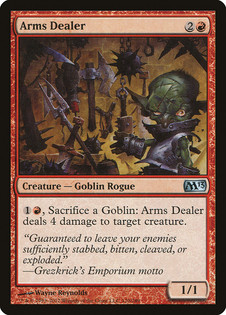















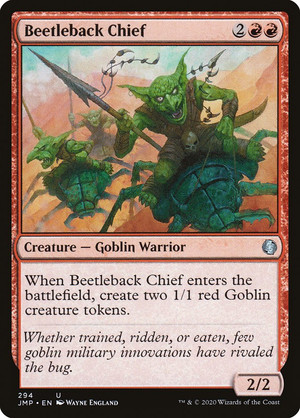







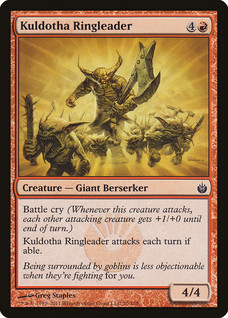





































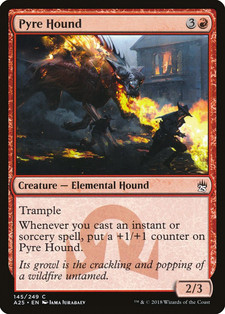



































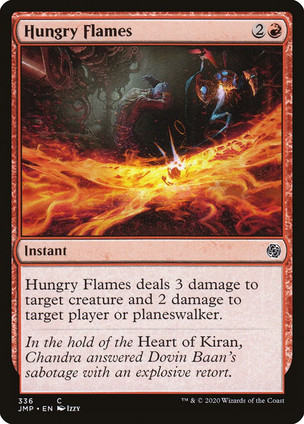































































Comments